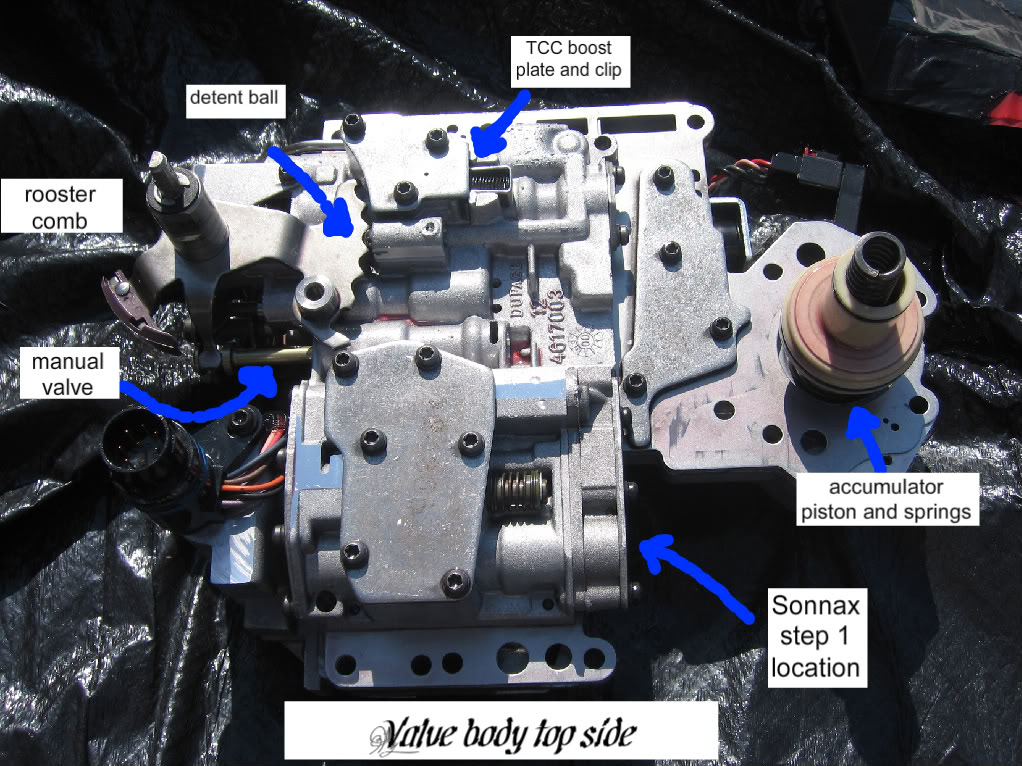Diagram 46rh Transmission Manual
1994-2001 Dodge Ram pickup truck transmissions Two five-speed manual transmissions were used on the 1994 Dodge Ram; the V6 got the, and the other engines got the. Both were made by New Venture Gear, a joint venture of GM and Chrysler, and had a 1:1 fourth gear; overdrive was.73 and.75, respectively. The NV3500 started with a lower first gear (4.01 vs 5.61) and had lower second and third gears.
Automatic transmissions were the 42RH and 46RH, differing primarily in their capacity. They shared third gear and overdrive ratios (1:1 and 0.69:1, respectively) but the heavier-duty automatic had a lower first and second gear. Neutral gear noise on Ram Pickup and Dakota manual transmissions used with V-6 and V-8 gasoline engines was reduced by a new clutch disc design that had four, rather than five, damper springs. Having fewer springs allowed each spring to be longer and have a lower rate for better vibration damping with the same torque capacity as the previous design. Longer, lower rate disc damper springs reduced gear rattle on diesels. Clutch actuation on the new Ram pickup was hydraulic.
Master and slave cylinders were lightweight molded plastic with steel liners for durability. With manual transmissions, the lever position was determined by human factors engineering and jury evaluation. Leaf area damage measurement.
A rubber sleeve isolated the shifter from noise and vibration in the transmission. A jury evaluation determined the durometer of the sleeve that provided the best combination of shift feel and isolation. A flexible shift boot attached to the floor pan over a foam gasket concealed the opening for the shifter and effectively blocked the passage of noise. A resilient knob was threaded onto the shifter and locked in place with a nut recessed in the top. A shift pattern insert snapped into the top of the knob, concealing the locking nut.
The new V10 and Cummins turbodiesel upgrades required a stronger manual transmission. The NV4500 HD was easier to shift than the prior diesel manual, while all ratios, forward and reverse, were synchronized (unlike some competitive transmissions).
Dual-cone synchronizers reduced effort at the shift knob by 10-15%. Torque capacity was 450 lb-ft, 10% more than the previous Getrag 360 heavy-duty transmission, thanks partly to larger diameter input and output shafts. The NV 4500 manual transmission was carried over from the prior Ram.
Rebuilt 46rh Transmission
The NV 3500 was used with 1994 Ram 1500 models (and the 318-powered Dakota). It provided smoother easier shifts and gear ratios more suitable to a half-ton pickup than the transmission used in the previous Ram pickup. Shifting was easier because internal components were less massive and had less rotating inertia, thus moved and changed speed more easily. Shifting to Reverse was synchronized for smooth operation.
46rh Automatic Transmission
The shift pattern had three planes, with Reverse opposite 5th gear at the right. Shifting into reverse during forward movement was blocked by the Reverse synchronizer and by a slight offset between the two gates. A stub lever on the transmission cover selected ratios through a single-rail mechanism. The transmission case and clutch housing were a one-piece aluminum casting to cut weight and noise transmission. The NV 3500 transmission weighed 100 pounds less than its predecessor. Automatic transmissions The 46RH transmission, with higher wide-open throttle shift points, was used on all trucks with V-8 engines. The 46RH transmission had a torque converter with lock-up clutch, a traditional TorqueFlite three-speed planetary transmission, and an electronicallycontrolled overdrive unit with a manual override.

The 42RH transmission, which was unchanged from 1993, was used on all trucks with the 3.9-liter V-6 engine. It was similar to the 46RH except in capacity. For smooth operation, the PCM (Powertrain Control Module) on all gas engines adjusted the vehicle speed at which the torque converter clutch was applied for variations in tire size and axle ratio, to assure that converter clutch actuation was coordinated with shifts to overdrive. The first time the converter clutch was applied was after the ignition was switched on, the PCM computed and stored the factor relating vehicle speed to transmission output speed. The lockup torque converter clutch engaged at highway cruising speeds, when the transmission was in the highest gear selected - overdrive or, when overdrive was locked out by the driver, third (direct) gear. A transmission temperature control system was standard on Ram pickup with the 47RH transmission and optional with the 46RH. The electronic transmission control unit could shift to third gear and engage the converter clutch if transmission oil temperature reached its upper limit.

Chrysler 46rh Transmission Problems

A temperature sensor in the cooler line to the radiator provided the signal; it also controlled a warning lamp on the instrument panel which would light if the downshift didn’t lower transmission fluid temperatures.